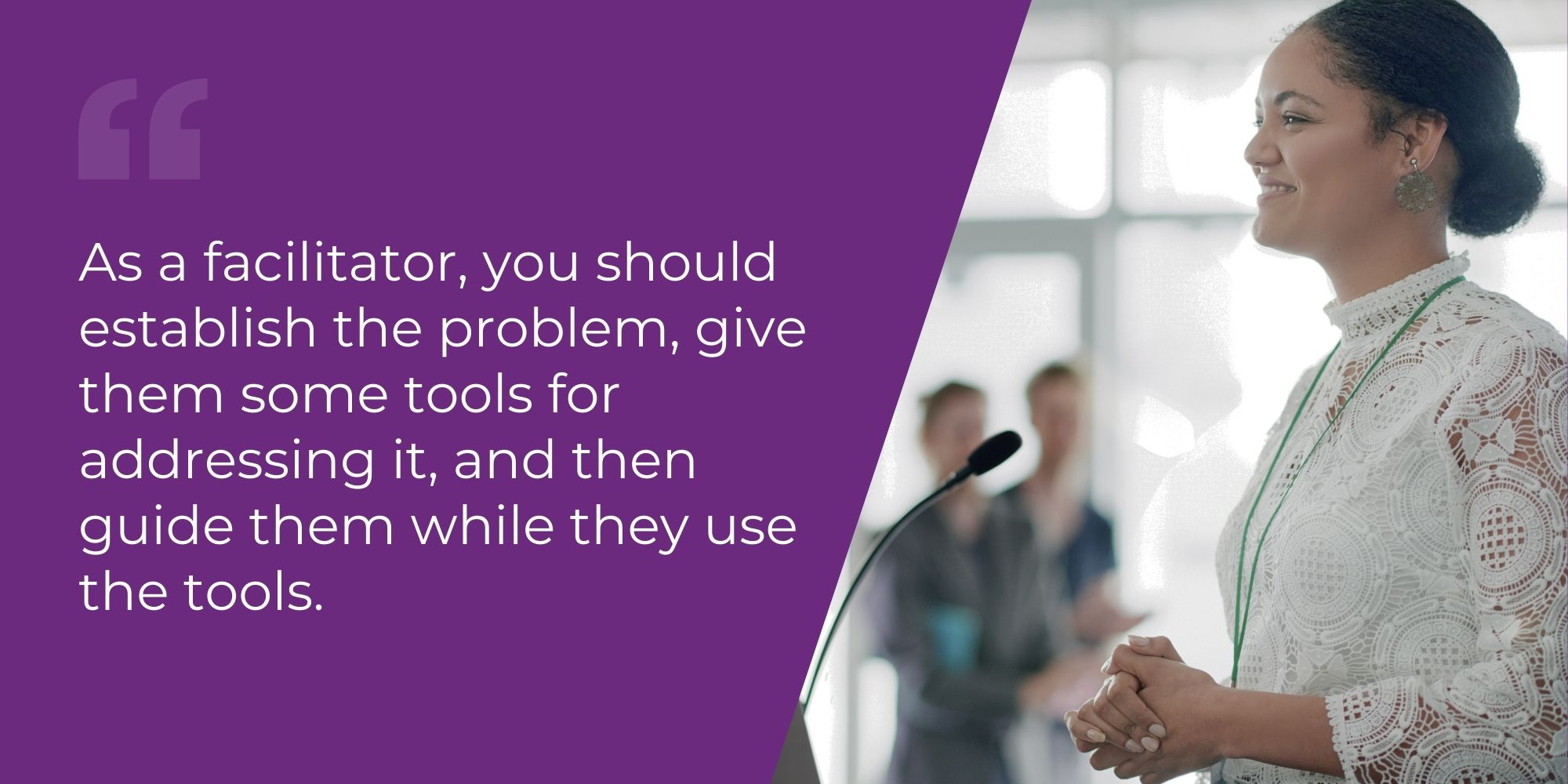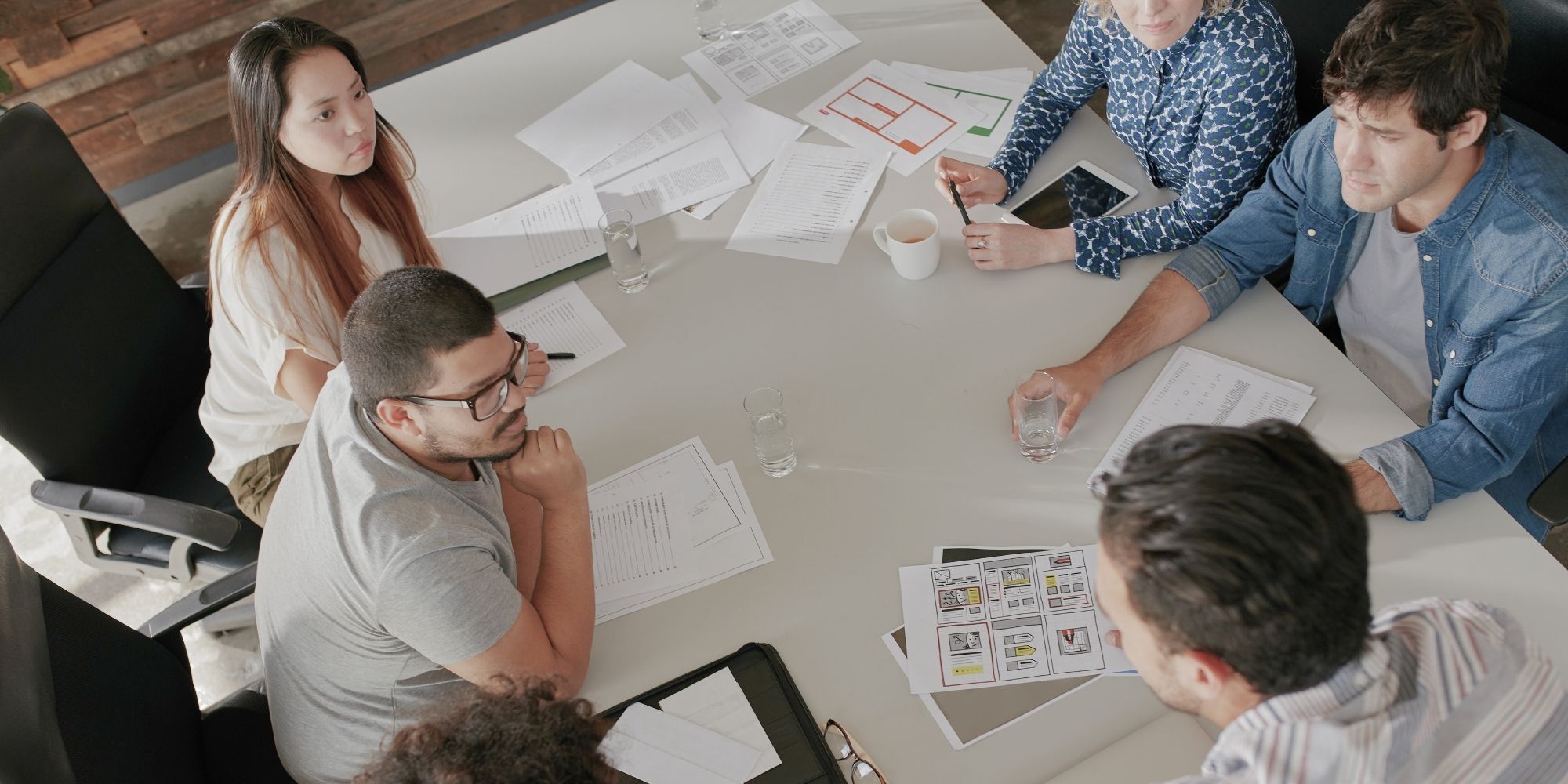Learn more about Colin Shaw: Join over 85,000 people on our LinkedIn Newsletter list or visit our website for more great podcast episodes.
Listen to the podcast:
In my line of work, I run a lot of workshops. Today, I wanted to share some things I learned about running a successful workshop.
Before we get into the rest of the tips, it is important to remember that if you are running a workshop, you need to break the ice. Breaking the ice will set the mood and alleviate any concerns that the workshop is going to be a boring presentation.
For example, I usually ask a question at the beginning of a workshop. One question asks people to share something strange about themselves. I remember one American bloke who collected tea bags. When I asked my podcast partner this question, I also learned he once wrote the script —or book, as they say in the biz—for a musical.
The strange thing I share is that I am married to my stepsister. Now, before you have a heart attack, let me explain.
My wife’s dad passed away right after we married, and my mum passed on a few years later. My wife and I then introduced my widower dad to her widowed mum, and voila! They fell in love and married. So, our matchmaking endeavors mean that I am married to my stepsister and an uncle to my kids.
My attendees know after a story like mine that this workshop will be anything but dull.
So, that’s what we will be doing here today. To that end, here are a few more tips to make your workshops successful.
Don’t Go into it with a Predefined Answer or Outcome.
You are the facilitator, which is critical to remember. You want the work in the workshop to be theirs, not yours. There is a lot more sense of ownership when the takeaways from the workshop are their own rather than a regurgitation of what you told them their takeaways would be.
Could there be a few elements in their takeaways that require improvement in their answer? Possibly…and you can help them with that. However, you should avoid telling them they are wrong and give them the answer you like. Force-feeding them your ideas might work in the short term, but you are less likely to get buy-in after the event in the long term. As a facilitator, you should establish the problem, give them some tools for addressing it, and then guide them while they use the tools.

To illustrate what I mean, here is an example. I establish the problem to address by asking clients, “What is the experience you are trying to deliver?” Maersk Line, the world’s largest shipping company, answered with three emotions they wanted customers to feel after the experience. Maersk Line chose “trust,” “cared for,” and “pleased.”
Then, I gave them some tools. For example, we defined what those words meant so there wasn’t any confusion about the emotional outcome we were striving to achieve. Once we agreed upon the definitions, we needed practical methods to improve their present experience and evoke them.
It is important to note that I didn’t know anything about shipping. However, being that outsider who didn’t work in shipping helped us in the workshop.
For example, Maersk used the term “rolling cargo,” and I asked them what it meant. The Maersk team explained that rolling cargo refers to a situation where Customer A has booked cargo on a vessel, but then Customer B wants their spot. If Customer B is willing to pay more, Customer A gets booted out of the hold.
After learning this term, my outsider perspective was able to illustrate to them why their customers might not trust them currently. I guided them to question the policy. I asked the Maersk Line team if the rolling cargo practice would evoke trust, particularly if they were in Customer A’s shoes.
The discussion that ensued was very interesting. However, through that discussion, we identified key areas and practicalities of what needed to happen to evoke those emotions they wanted.
You will recall that I said the icebreaker is key, and this situation is why. People won’t have active and lively conversations where they bounce ideas off one another and challenge the status quo if they don’t feel comfortable. Laughing together about collecting tea bags or my interesting family tree is a way to manifest that comfort and lower the social barriers that can occur and prevent progress.

Plan an Agenda, But Be Flexible.
Now, on a practical note, you should draw up an agenda before the workshop. You should also include the projected time spent on each item with the client and the ending time for the entire event. However, you should always write this agenda in pencil to be prepared to edit the initial estimates.
Flexibility in the agenda’s timeline ultimately helps the outcome. Extra time might be necessary to facilitate a valuable and relevant discussion for the group. It also allows more people to “get it,” which can take longer than you anticipated sometimes. So, it’s great to have some wiggle room in the schedule.
Get Help Dividing Up the Attendees in Groups.
You want to avoid having too many similar types of people on the same team. But how would you know? You wouldn’t. They are total strangers. Therefore, this tip also recommends discussing with the client the best way to divide attendees into working groups.
When deciding how to divide attendees, consider the desired outcome, i.e., what type of workshop are you trying to deliver? If you need the solutions to be divisionally based, ask for help splitting the team by departments. If you want to mix different perspectives, have people from various departments mix in the groups.
Optimizing by personality types or levels of seniority can also help. For example, you don’t want many lower levels in a group with a senior manager. The less senior team members might feel like they can’t go against the senior manager’s way of thinking, which can hinder the possibilities of the workshop’s outcome.
You face the same challenges with too many strong personalities in a group, particularly those that lean to the negative side. Disagreements are helpful as we’re airing out ideas and thinking in new ways, but subversion or dismissiveness of the entire approach will undermine the accomplishments.
Consider Assigning Pre-work.
Over the years, we’ve developed several assessment tools. We employ them to get attendees’ opinions pre-workshop. We like these because they give us an idea of who we are talking to and their feelings about the area we will discuss.
We also use that information to explain why we need to make the change and why we’re having this workshop. The tools reinforce that they have work to do; the workshop shows them how they can change it.
Other pre-work ideas are to have them read an article or listen to a podcast before the workshop. This type of pre-work gets them in the mindset of what will happen in the workshop and gives us all an example to draw from during the session.
However, only a third of the audience will read or listen to it. So, assign it, but be prepared to summarize it for people who show up to the workshop blissfully naïve about what you will cover.

Opt for a Smaller Room.
This one is purely physical. The idea here is that if you have the choice between a room that is a bit too large and a room that is too small, choose the small one. I find the energy is better when people are closer. You can almost feel it buzzing around.
Small rooms make it easier to walk about and ensure everyone understands the instructions or is on the same page. It’s a good idea to check in on this occasionally. You might be surprised how often a group misinterprets the exercise or material, and getting them back on track is essential to facilitate a successful outcome.
Be Clear About Instructions.
Along those lines, have explicit lists of instructions. For example, if you have an exercise where they are staying in the room, keep those instructions up on the projector while they are working. If they leave the room to work in a breakout session, give them printed instructions.
I also like counting the exercise steps to keep the groups on track. It will say, “First, do this, then do that,” and so on. I do this because people usually feel they understand what I expect them to do and in what order but then forget after getting into the exercise. So, make it easy for attendees by spelling it out and making it accessible.
Remember the Peak-End Rule.
You might remember the Peak-End Rule from my newsletters about the behavioral sciences. Nobel-prize-winning economist Professor Daniel Kahneman devised it to describe how people remember experiences. Professor Kahneman suggested that what we remember about an experience is the most intense emotional moment and how we feel at the end.
The workshop experience has a peak moment and an end experience. Your job is to know what those were and, if possible, enhance these moments.
For example, I like to play motivational music in the background. It is one of my little tricks to enhance the energy in the room and perhaps positively influence the peak moment.
Create a Takeaway to Help Apply What They Learned at Work the Next Day.
In about half of my workshops, I found that management doesn’t always follow up on the actions we agreed upon that day. It’s a bit depressing, isn’t it?
The problem is organizations rarely have the structure to apply what attendees learned in the workshop once they leave. So, the list of five practical actions the team wants to take to deliver an improved Customer Experience gathers dust, and nothing changes.
To combat this outcome, give the attendees a takeaway document outlining what they will do when they return to the office. Before you hand it to them, explain that the workshop wasn’t only a fun day away from their hum-drum routine at the office. The goal was to determine how to change what they do today so there can be a different tomorrow. The document then outlines the specific action items the team agreed they should take in the workshop.
Not only will a takeaway document move the organization forward, but it will also help the team realize that there was a reason they gave up their time away from the projects looming over them. It reinforces that the session had a purpose and can make improvements for the organization.
Try to Get the Workshop Off Site.
If you try to hold the meeting on-site, you will have attrition. People will get called away for various reasons or will take off at lunch. Or, they spend the breaks from the workshop checking emails and never taking a break, diminishing their creativity and energy in the workshop.
We think and act differently when we are in various spaces. For example, sometimes, when I or my podcast partner are stuck writing something, we will move to a different physical space to see if that helps. A new venue can provide a unique perspective and keep the ball moving on our writing project.

Determine the Ideal Team Size for the Activity
Along with the optimized personality types or management levels, you should also pre-determine the optimal group size. For me, it’s usually around six to eight people. However, sometimes, the task they are doing means that smaller is more appropriate.
For example, if I want them to discuss and come back with their thoughts in order, then two to three is an appropriate size. By contrast, if I have a project that needs diverse input to be successful, then six to eight.
Also, remember that smaller groups are inherently harder to hide in, meaning everyone has to put their two cents into the discussion or outcome. By contrast, larger groups are more conducive to hiding, so remember that, too.
Be Clear about the Goal of the Session.
My last bit of advice is to be clear about what the workshop seeks to achieve. You should know what specific problem you want to solve and what you want the attendees to take back to their organization.
To be clear, I don’t mean that you have a specific solution they walk away with; they should still develop the solutions themselves. However, you should know what solution they should be creating, as well as the reason there is a solution needed.
So, be clear on the goal. Know what you want (and what the client wants you to get) and align everything within the workshop towards that goal.
When you know the goal, it also helps manage the attendees’ expectations. That way, if anybody asks, “Why are we doing this?” you have an answer and a reason.
So, there you have them, my tips from my years of experience leading workshops. If you can follow these in your planning and execution, you will likely have the outcomes that make a difference for people. Outcomes are key, or at least they are when it comes time to refer or rebook, which is never a bad thing to have come your way.

Colin has spoken at hundreds of conferences, including some of the world’s largest brands. Talk to Colin about how he can speak ‘in person’ or ‘virtually’ at your conference. Click here.


